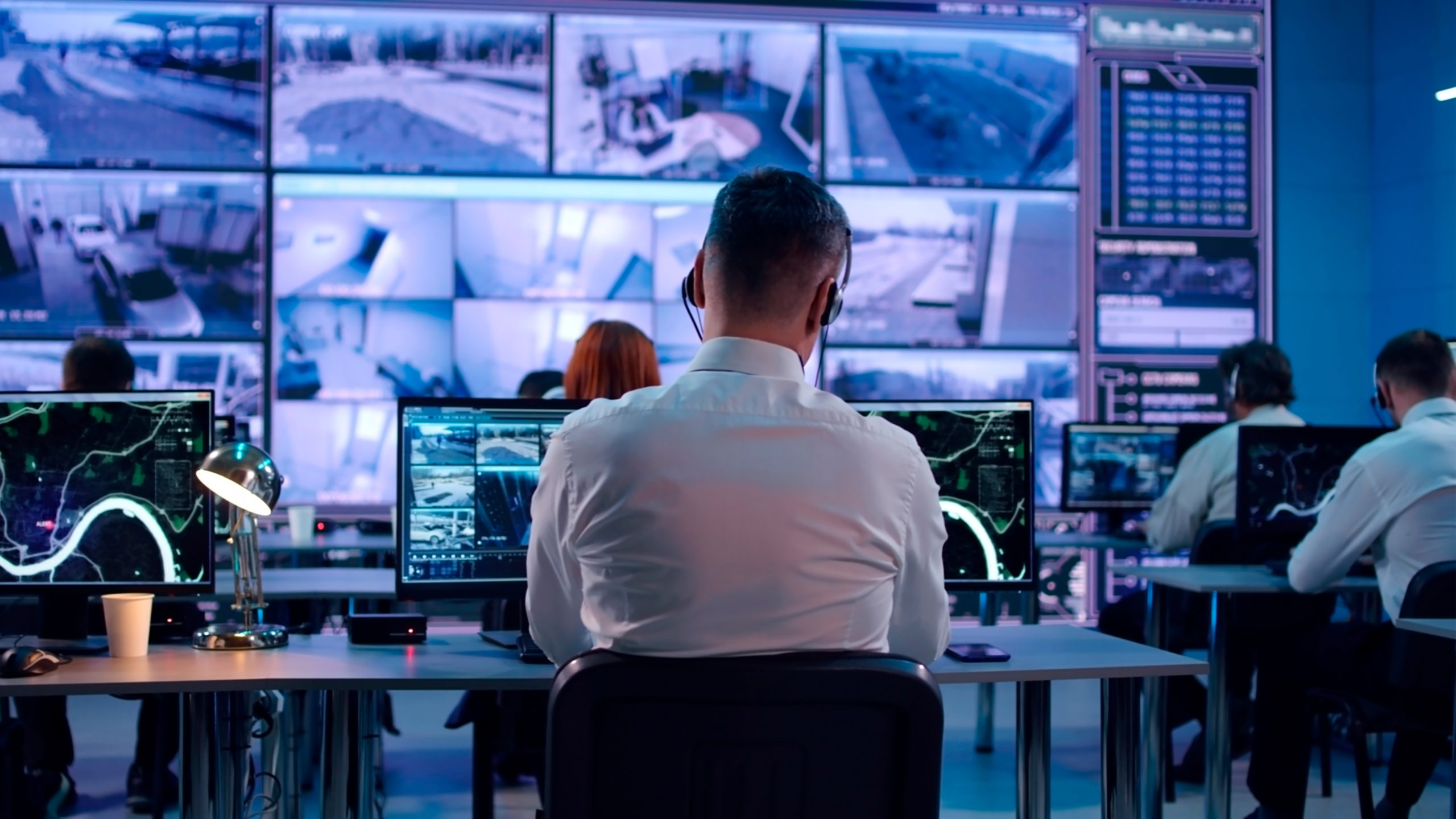The growth of the transport control room sector is strongly driven by the growth of transport software solutions for air, rail, road and sea traffic.
More innovative and even revolutionary technologies are constantly pushing the market upwards.
Moreover, the volume of air traffic is constantly increasing and is expected to double in the next two decades.
In this regulation of air traffic, control rooms will be essential:
To make a safe journey by plane, a control room is the equipment that allows :
- supervision to decide e.g. routes, manoeuvres, authorisations in real time
- an ergonomic location for all experts/operators
- to manage the increasing number of flights
To accompany this growth, a new technology is emerging: the remote control tower!
The traditional air traffic control tower is replaced by a tower system with cameras, microphones, air traffic control tools, etc. Small and large airports are then controlled by a centralised control room which is connected to the tower system via WAN.
Features of this remote solution
- Several panoramic video walls display the traditional 360° view of the air traffic tower in real time.
- Operators can control different airports at the same time without changing location.
- The supporting ATM software offers the possibility to manipulate the screen with additional information using for example augmented reality.
- Using high-resolution cameras, the operators’ view at night is improved. Digital images can be processed and enhanced for night use and the cameras allow the operator to zoom in.
- The airport is equipped with additional microphones on the outside. The remote control tower with its surround sound system gives the operator the feeling of being there.
- In addition to the panoramic video wall, the operator has the possibility to manipulate specific images, information on small screens right in front of him.
This ergonomic solution increases response time and sets the right focus for operators. The added value of this remote control solution :
- Increases the efficiency of air traffic control
- Reduces costs. Medium and low traffic airports can be controlled centrally.
- Requires fewer staff and less expensive infrastructure to control an airport.
- Provides better training and analysis opportunities for a more efficient workforce
Who are the main innovators?
Two air traffic management players (see below) have found revolutionary solutions to radically change supervision in air traffic control rooms:
- Frequentis implements its remote control tower concept in cooperation with Deutsche Flugsicherung (DFS). Together they have inaugurated the world’s largest remote-controlled airport with 15,000 flights per year. Saarbrücken Airport is controlled from the control room 450 km away. The level of security is a big advantage of Frequentis and necessary to access the German market. The Frequentis solution can provide a realistic view through the panoramic wall or can provide various information on small screens in front of the operator. Ergonomics is extremely important in the 24/7 operation. In addition, the company plans to control several airports simultaneously from one central control room. This would have an even greater impact on medium to low traffic airports (3,000 to 6,000 flights/year) in terms of profitability. Currently, this concept is in the test phase.
- The pioneering company in this field is Saab. Saab has contributed to the development of a new airfield control system, based on its digital remote-controlled tower solutions. In April 2015, they commissioned the world’s first air traffic control tower at Örnsköldsvik airport in northern Sweden. Since April 2019 in southern Sweden and since December 2019, two other remote-controlled airports have been operating with Saab solutions. An important competitive advantage of the competition is the use of augmented reality to overlay aircraft with additional information. Their software also simulates traffic flows to eliminate bottlenecks in the airside infrastructure. In addition, there is a record and playback function to search for targets, learn from them and be more efficient in the future.
In summary:
By centralising the control of airports and flights in a remote location, it is possible to manage a larger number of flights and thus become more cost effective. In addition, additional functionality from this technology allows airports to increase their performance.
Ready to build or enhance
your control room?
Get your free guide now:
